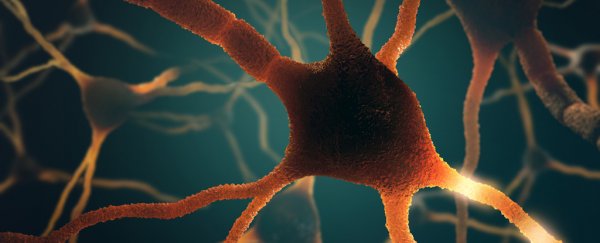Most biology students will be able to tell you that neural signals are sent via mechanisms such as synaptic transmission, gap junctions, and diffusion processes, but a new study suggests there's another way that our brains transmit information from one place to another.
Researchers in the US have recorded neural spikes travelling too slowly in the brain to be explained by conventional signalling mechanisms. In the absence of other plausible explanations, the scientists believe these brain waves are being transmitted by a weak electrical field, and they've been able to detect one of these in mice.
"Researchers have thought that the brain's endogenous electrical fields are too weak to propagate wave transmission," said Dominique Durand, a biomedical engineer at Case Western Reserve University. "But it appears the brain may be using the fields to communicate without synaptic transmissions, gap junctions or diffusion."
Running computer simulations to model their hypothesis, the researchers found that electrical fields can mediate propagation across layers of neurons. While the field is of low amplitude (approximately 2–6 mV/mm), it's able to excite and activate immediate neighbours, which subsequently activate more neurons, travelling across the brain at about 10 centimetres per second.
Testing on mouse hippocampi (the central part of the brain associated with memory and spatial navigation) produced similar results, and when the researchers applied a blocking field, it slowed down the speed of the wave.
According to the researchers, this is evidence that the propagation mechanism for the activity is consistent with the electrical field.
"The results indicate that electric fields (ephaptic effects) are capable of mediating propagation of self-regenerating neural waves," they write. "This novel mechanism coupling cell-by-volume conduction could be involved in other types of propagating neural signals, such as slow-wave sleep, sharp hippocampal waves, theta waves, or seizures."
If their findings, which are reported in The Journal of Neuroscience, can be expounded in further studies, it could help us to better understand how brain waves are associated with things like memory, epilepsy, and healthy physiology.
"Others have been working on such phenomena for decades, but no one has ever made these connections," said Steven J. Schiff, director of the Centre for Neural Engineering at Penn State University, who wasn't involved in the research.
"The implications are that such directed fields can be used to modulate both pathological activities, such as seizures, and to interact with cognitive rhythms that help regulate a variety of processes in the brain."
